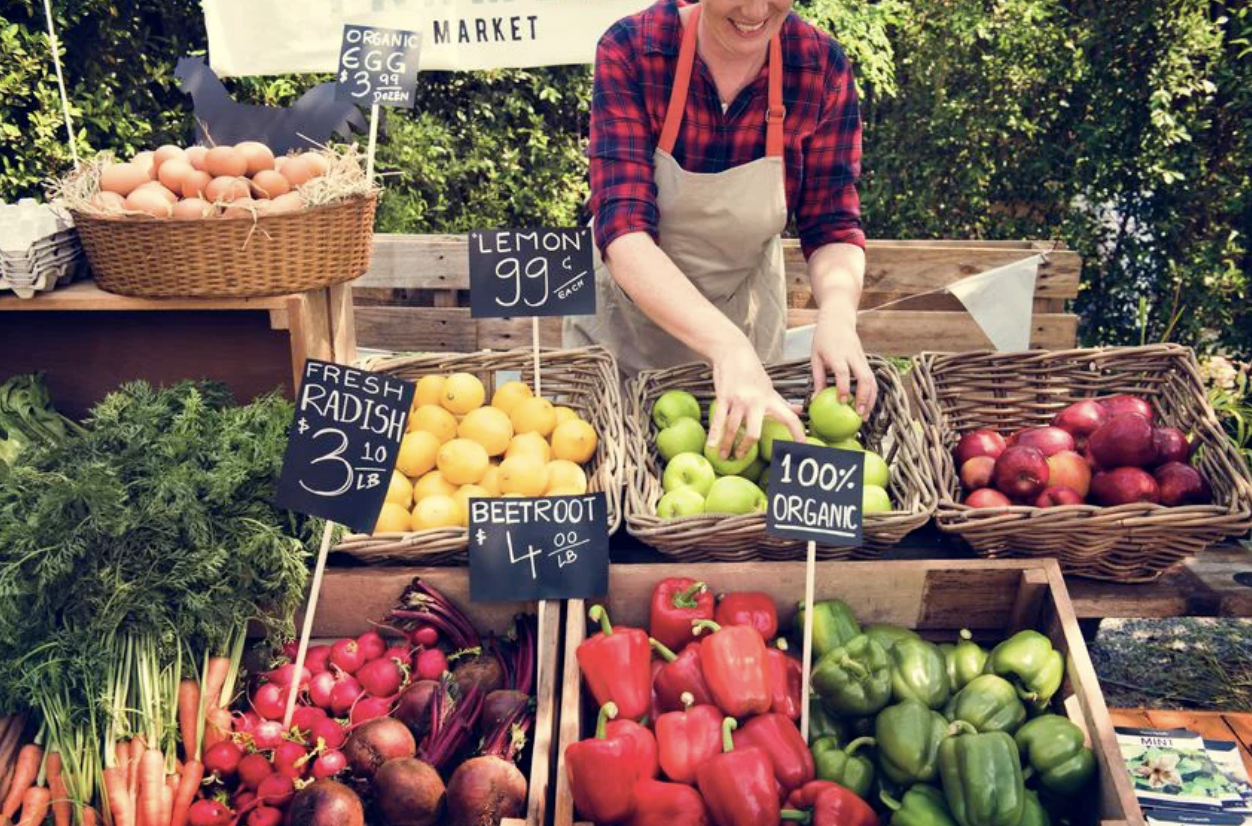Support Local to Optimize Your Health and Environment
With mega farms and genetic modification, we live in a world where food is plentiful. To ensure our farmers provide safe and quality food in the United States there are government regulations that standardize food safety, food quality, farm practices and conservation efforts. These regulations are meant to safeguard consumers from food-borne diseases as well as reduce impact on the environment and your health. However, current regulations are written to favor big agribusiness and Concentrated Animal Feeding Operations (CAFOs) over your local and organic farmer. The question to ask is - Does this favoritism help or hinder your health and environment?
Food Safety
- Food-borne bacteria hardly existed 100 years ago, prior to big agribusiness and CAFOs. The creation of CAFOs has actually increased risk of spreading disease and cross contamination.
- To protect the consumer, regulations require a meat inspection prior to approval for sale. However, the “inspection” process consists of a visual inspection, without any empirical testing for contamination or impurities.
- These “inspected” meats were still contaminated. According to the CDC (Center for Disease Control) approximately 48 million Americans - roughly 1 in 6 people - get sick, 128,000 are hospitalized, and 3,000 die of foodborne diseases.
- Animals on a small farm are less crowded than at CAFOs which reduces risk of spreading disease.
- A burger from a small farm consists of meat from 1-2 cows compared to 1,000 different animals in a burger from a CAFO facility. A small farm burger decreases risk of cross contamination.
- Hens coat their eggs with an antibacterial film. However, current regulations require washing eggs which strips away this protective coating, increasing risk of bacteria contamination before reaching the market.
Food Quality
When a steer is slaughtered, the muscle tissue releases an enzyme called calpain. This enzyme relaxes the muscle, preventing it from tightening for the first couple of hours after slaughter, and helps to tenderize the meat. This means the quality of your meat is determined by the meat processing procedure. Current regulations require meat to be chilled within 1 hour of slaughter, halting the release of calpain. Fatty cuts of meat with less muscle fibers can tenderize in that short time, but lean cuts can’t tenderize and will be very tough. Additionally, grass-fed beef is leaner than grain fed beef from CAFOs and needs more time to release calpain to provide a tender cut for the consumer. The current regulations create a tougher meat for grass fed beef, making it less appealing.
Farming Best Management Practices (BMP)
The current protocol for waste management at CAFO farms is manure lagoons – concrete holding tanks that house manure. However, the acidity of the manure creates cracks and breaks in the concrete allowing manure to leak out. There is a safer solution. Wood can compost manure during winter months, and pigs can aerate the compost to provide fresh fertilizer in the spring. This practice creates a renewable loop of sustainable farming practices, yet it is not recognized as a BMP.
Conservation Efforts
Conservation programs provide incentives to take sensitive areas such as wetlands and riverbanks out of production. However, the systems are costly, energy-intensive, high maintenance and not adaptable. This deters farmers from focusing on environmental conservation. Additionally, fuel consumption as a whole increases from buying our foods from different countries or parts of the U.S.. Small farmers are also required to ship food to a separate facility for inspection which creates more need for fuel consumption.
But there are simple solutions to increase conservation efforts. Building ponds on farms avoids high impact zones and provides environmentally friendly grazing. Also, supporting local farms decreases fuel consumption. When you support local you not only save money, you also obtain food that is more colorful, flavorful and nutrient dense. It’s a win-win situation!
Below, check out how to support your local farmer!
Support Maine Organic Farmers
The Maine Organic Farmers and Gardeners Association (MOFGA) was formed in 1971 and is the oldest and largest state organic organization in the country! Residents of Maine are lucky to have such a strong presence and influence of the organic farmer. According to MOFGA, there are approximately 200 organic farms in the state of Maine. As a Maine
resident, you have opportunity to buy organic no matter where you live. That’s because each county has anywhere from 3 to 30 organic farms to choose from! You can support your favorite Maine organic farmer through a CSA share, buying
at a local co-op or frequenting your local farmers’ market.
Consider Signing Up for a CSA Share - Community Supported Agriculture (CSA) is a way for you, the consumer, to buy local and seasonal food directly from your local farmer. You are essentially buying a farm share. Each farm is different in their approach, but primarily you receive a “share” that consists of a box of seasonal produce each week throughout the farming season. This is a great way to eat organic and local while supporting your community farm. You can find a local CSA organic farm at http://www.mofga.net/Directories/.
Shop at Your Local Food Co-Op - A food cooperative, or food co-op, is a food distribution outlet in which decisions about the production and distribution of its food are chosen by its members. They usually provide mostly natural and locally sourced foods. There are 14 food co-ops sprinkled throughout Maine. When you shop at the Portland Food Co-Op you are supporting local produce farmers, dairy and meat farmers, beekeepers, bakeries, wineries, breweries and more!
Frequent Your Local Farmers’ Market - A farmers’ market is a great way to get exposure to many local farms in one location. There are 119 Farmers’ Markets throughout Maine with a dozen in the Greater Portland area. Go to http://www.mainefarmersmarkets.org/ to find the closest market to you!
Enjoy the bounty of our local farms this spring and you will reap the benefits!
RESOURCES:
https://www.cdc.gov/foodborneburden/2011-foodborne-estimates.html
http://www.mofga.net/Directories/
http://www.localharvest.org/csa/
https://en.wikipedia.org/wiki/Food_cooperative
http://www.getrealmaine.com/index.cfm/fuseaction/farmersMarkets.directory/index.htm
Everything I Want To Do Is Illegal, Joel Salatin

